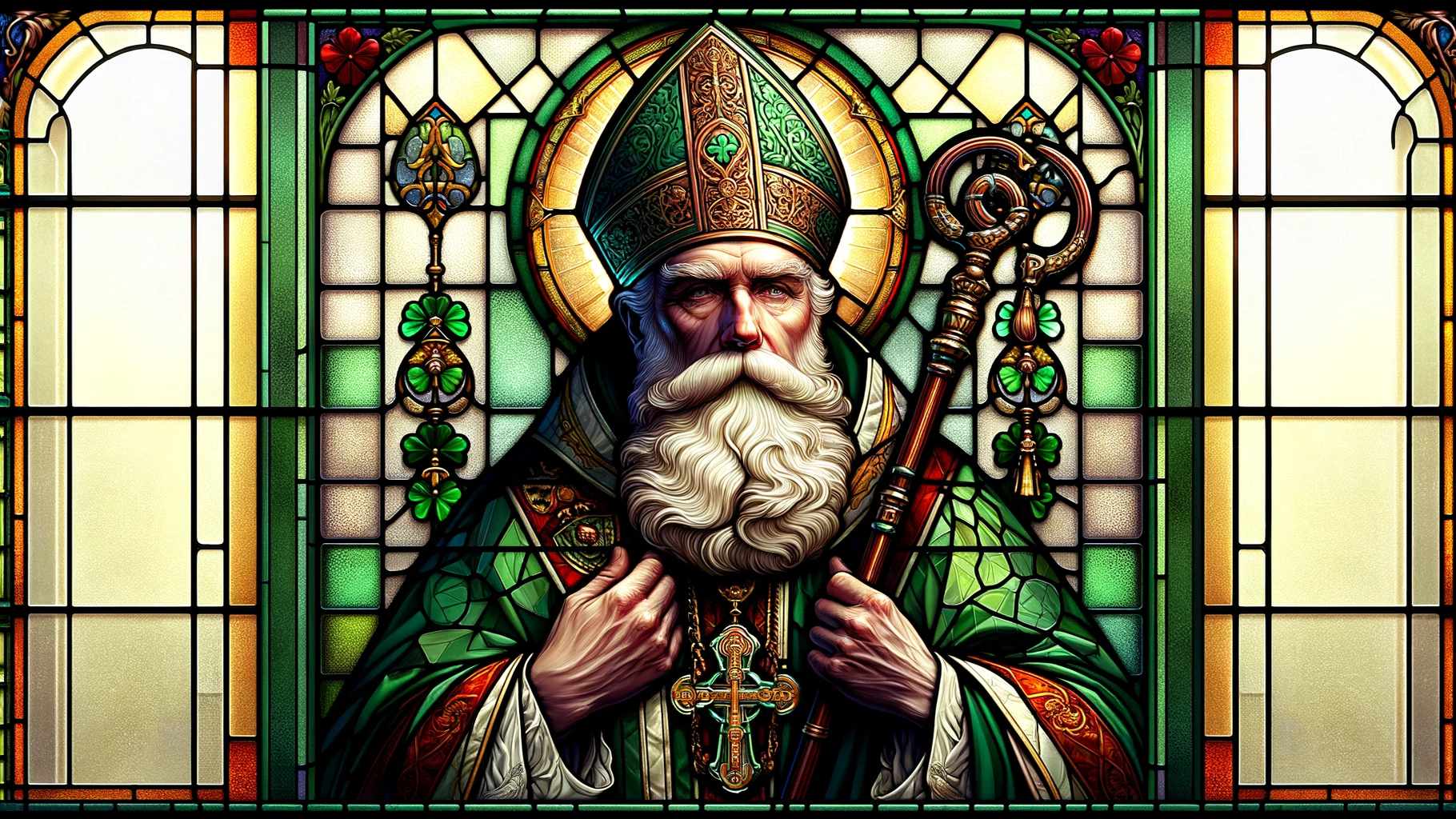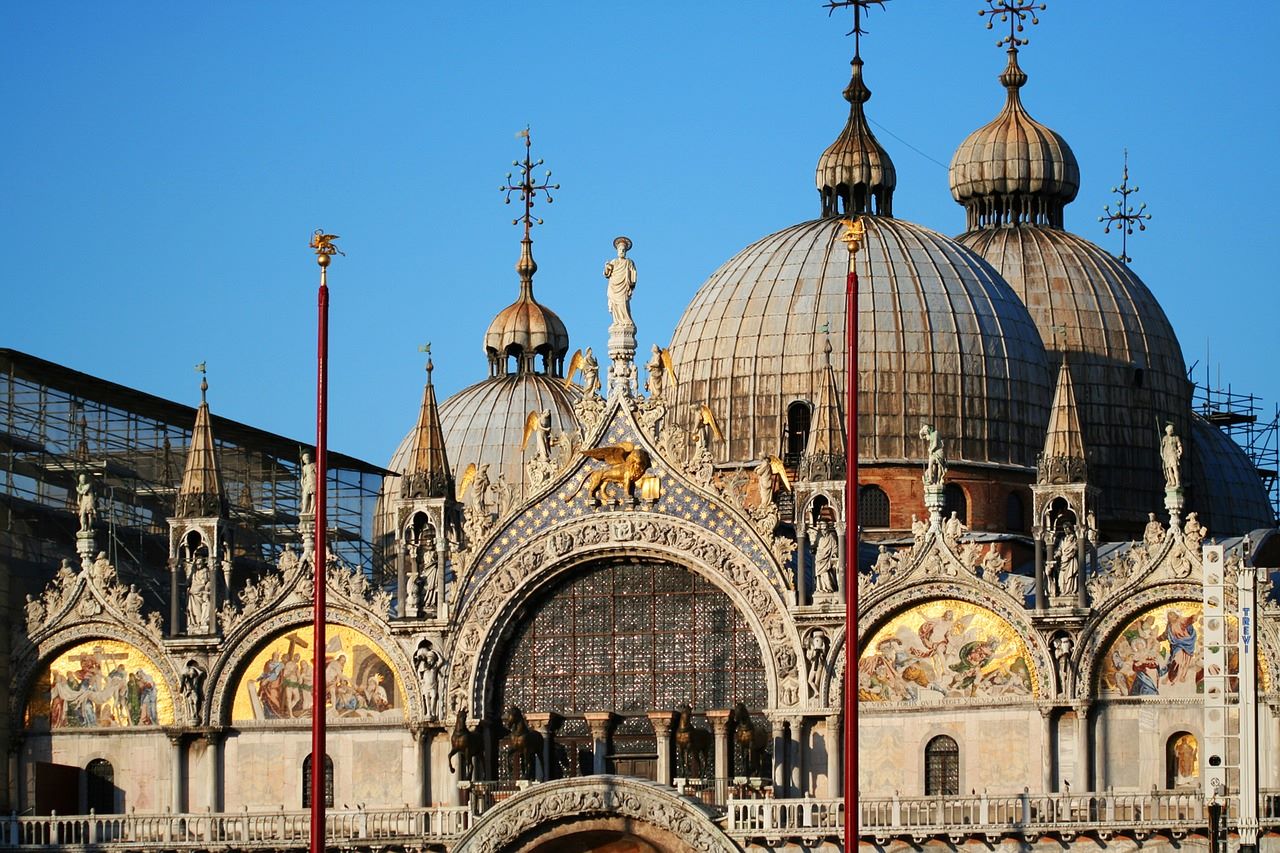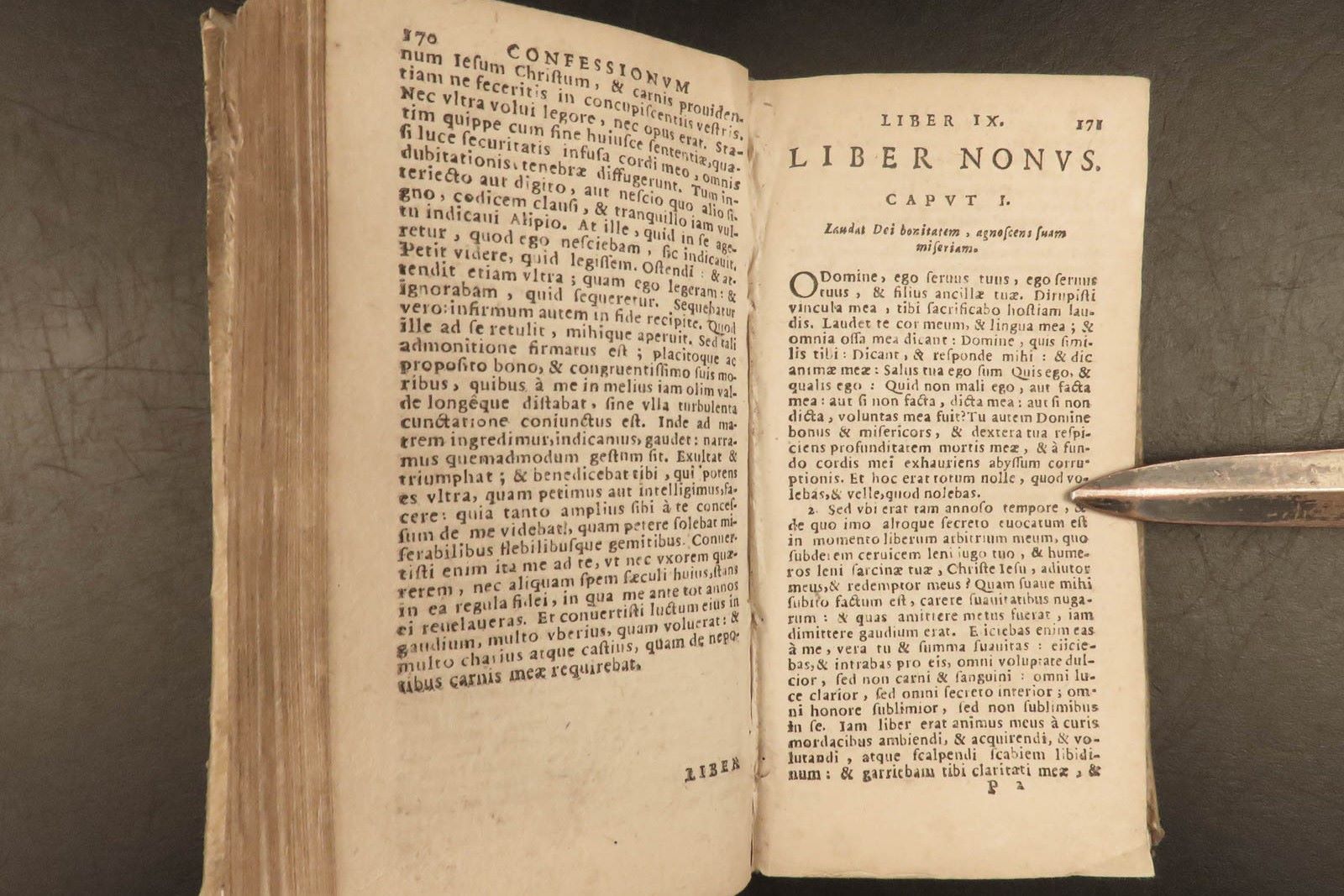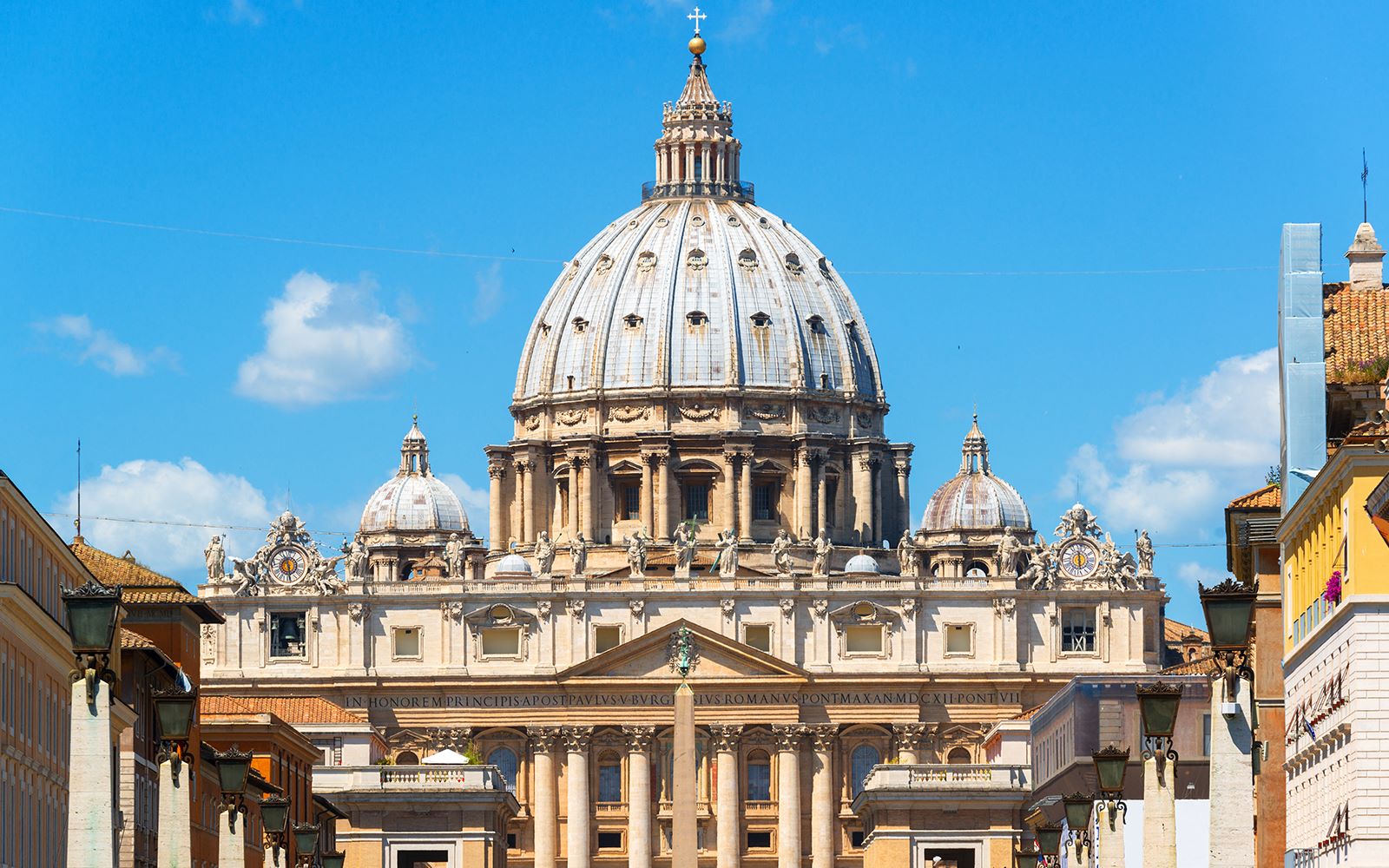Home>Theology and Spirituality>What Is Communion Of Saints


Theology and Spirituality
What Is Communion Of Saints
Published: February 24, 2024
Jason DeRose, Managing Editor at Christian.net, uses his expertise in religion and journalism to deepen understanding of faith's societal impacts. His editorial leadership, coupled with a strong academic background, enriches the platform’s diverse content, earning him recognition in both journalism and religious circles.
Discover the significance of the Communion of Saints in theology and spirituality. Explore its role in the Christian faith and its impact on believers' lives.
(Many of the links in this article redirect to a specific reviewed product. Your purchase of these products through affiliate links helps to generate commission for Christian.net, at no extra cost. Learn more)
Table of Contents
Introduction
The Communion of Saints is a profound and cherished concept within Christian theology, encompassing the interconnectedness of all believers, both living and deceased, across time and space. This spiritual communion transcends earthly boundaries and unites the faithful in a sacred bond that reflects the eternal nature of the Christian faith.
The Communion of Saints is not merely an abstract theological idea; it is a living reality that permeates the Christian experience. It embodies the belief that all believers, whether on earth, in purgatory, or in heaven, are united in Christ. This unity is not limited by physical existence but extends into the spiritual realm, where the prayers, love, and support of the saints and the faithful are intertwined in a divine tapestry of interconnectedness.
This profound interconnectedness is rooted in the teachings of Jesus Christ and finds expression in the rich tapestry of Christian tradition. It is a source of comfort, inspiration, and hope for believers, serving as a reminder that they are never alone in their faith journey. The Communion of Saints is a testament to the enduring nature of Christian fellowship and the unbroken bond that transcends the limitations of mortal life.
As we delve into the depths of this theological concept, we will explore its biblical foundations, its significance within the Catholic Church, its presence in other Christian traditions, and its enduring importance in shaping the Christian faith. The Communion of Saints stands as a testament to the timeless truth that the body of Christ is a living, interconnected reality that spans the ages and unites believers in a bond that transcends the temporal confines of earthly existence.
Read more: Who Are The Communion Of Saints
Definition of Communion of Saints
The Communion of Saints refers to the spiritual bond and unity among all believers, living and deceased, who are part of the body of Christ. This profound concept embodies the interconnectedness of the entire Christian community, transcending time, space, and earthly limitations. It encompasses the living faithful on earth, the souls undergoing purification in purgatory, and the saints in heaven, forming a holistic and eternal communion.
At its core, the Communion of Saints reflects the belief that the Church is not confined to the physical realm but extends into the spiritual dimension, where the faithful are united in a sacred fellowship. This communion is rooted in the understanding that all believers, regardless of their earthly state, are bound together by their shared faith in Christ. It emphasizes the continuity of the Christian community across generations, affirming the enduring nature of the body of Christ.
The term "saints" in this context does not solely refer to canonized individuals but encompasses all who have been sanctified through their union with Christ. It includes ordinary believers who have lived lives of faith and virtue, acknowledging their role in the communion of the faithful. The Communion of Saints underscores the interconnectedness of the entire Christian family, recognizing the spiritual solidarity that transcends individual lifespans.
This concept also encompasses the belief in the intercessory power of the saints, who are seen as advocates and companions in the journey of faith. The communion extends beyond the confines of earthly existence, allowing for a profound spiritual exchange between the living and the deceased. The prayers and supplications of the faithful are believed to resonate within this communion, fostering a sense of unity and mutual support that transcends the boundaries of mortality.
In essence, the Communion of Saints embodies the timeless truth that the body of Christ is a living and interconnected reality, uniting believers across time and space. It serves as a source of comfort, hope, and inspiration, reminding the faithful that they are part of a larger spiritual family that spans the ages. This profound communion reflects the eternal nature of the Christian faith and underscores the unbroken bond that unites believers in a sacred fellowship beyond the constraints of earthly existence.
Biblical Basis for Communion of Saints
The biblical foundation for the Communion of Saints is deeply rooted in the teachings of the New Testament, reflecting the interconnectedness of believers across time and space. The concept finds its origins in the writings of the apostles and the early Christian community, providing a theological framework for understanding the unity of the body of Christ.
One of the key passages that underpin the Communion of Saints is found in the book of Hebrews, where the author emphasizes the spiritual bond between the living and the departed believers. In Hebrews 12:1, the concept of a "great cloud of witnesses" is introduced, depicting the saints as a spiritual assembly that surrounds and supports the faithful on earth. This imagery conveys the idea of a timeless communion, where the saints in heaven are actively engaged in the lives of those still on earth, offering their support and encouragement in the journey of faith.
Furthermore, the apostle Paul's teachings in his letters highlight the interconnected nature of the body of Christ. In his first letter to the Corinthians, Paul employs the metaphor of the body to illustrate the unity and diversity within the Christian community. He emphasizes that all believers, regardless of their individual roles and functions, are part of a cohesive and interconnected whole, united by their shared faith in Christ. This imagery underscores the communal aspect of the Christian faith, emphasizing the spiritual bond that transcends individual identities and lifespans.
The biblical basis for the Communion of Saints also encompasses the belief in the intercessory role of the saints. In the book of Revelation, the prayers of the saints are depicted as ascending to God, signifying their ongoing spiritual engagement in the affairs of the earthly realm. This portrayal reinforces the idea that the communion extends beyond the boundaries of earthly existence, allowing for a profound exchange of prayers and support between the living and the deceased.
Overall, the biblical foundation for the Communion of Saints is firmly rooted in the teachings of the New Testament, emphasizing the interconnectedness of believers across generations. The imagery of a spiritual assembly, the metaphor of the body of Christ, and the portrayal of the saints' intercessory role collectively contribute to the rich biblical tapestry that underpins this profound theological concept. These biblical teachings serve as a testament to the enduring nature of the Christian faith and the unbroken bond that unites believers in a sacred fellowship that transcends the limitations of mortal life.
The Role of the Communion of Saints in the Catholic Church
The Communion of Saints holds a central and revered position within the teachings and practices of the Catholic Church, serving as a cornerstone of its spiritual identity and communal life. This profound concept plays a multifaceted role in shaping the faith and devotion of Catholic believers, permeating various aspects of liturgy, prayer, and theological reflection.
At the heart of Catholic devotion to the Communion of Saints is the veneration of the saints, who are regarded as exemplars of faith and virtue. The saints serve as inspirational models for the faithful, embodying the transformative power of divine grace and the potential for holiness within the human experience. Their lives and deeds are celebrated as testimonies to the redemptive work of Christ and the sanctifying presence of the Holy Spirit, inspiring believers to emulate their faith and commitment to the Gospel.
Furthermore, the intercessory role of the saints holds significant importance within Catholic spirituality. Believers invoke the prayers and intercession of the saints, seeking their heavenly assistance and support in times of need. This practice reflects the belief in the ongoing communion between the living and the deceased, affirming the spiritual solidarity that transcends the boundaries of earthly existence. The saints are revered as compassionate intercessors who accompany the faithful on their earthly pilgrimage, offering their prayers and advocacy before the throne of God.
In the liturgical life of the Catholic Church, the Communion of Saints is vividly expressed through the celebration of feast days dedicated to various saints and martyrs. These liturgical commemorations serve as occasions for the faithful to honor the lives and contributions of the saints, fostering a sense of spiritual kinship and unity within the body of Christ. The liturgical calendar, replete with feasts and memorials of the saints, underscores the enduring impact of the Communion of Saints on the ecclesiastical rhythm of Catholic worship.
Moreover, the Catholic Church's devotion to the Communion of Saints extends to the veneration of relics and sacred images associated with the saints. Relics, such as physical remains or objects connected to the saints, are venerated as tangible links to the heavenly communion of the faithful. They serve as tangible reminders of the saints' presence and spiritual influence, evoking a sense of awe and reverence among the faithful.
In summary, the Communion of Saints occupies a central and vibrant role within the Catholic Church, permeating the spiritual, devotional, and liturgical dimensions of Catholic faith. It serves as a source of inspiration, intercession, and communal solidarity, embodying the timeless truth of the interconnectedness of the body of Christ across time and space. The Communion of Saints stands as a testament to the enduring vitality of the Christian faith and the profound bond that unites believers in a sacred fellowship that transcends the limitations of mortal life.
The Communion of Saints in Other Christian Traditions
The Communion of Saints, while prominently emphasized within the Catholic Church, also holds significance in various other Christian traditions, albeit with nuanced interpretations and expressions. In Eastern Orthodox Christianity, the concept of the communion of saints is deeply ingrained in the liturgical and spiritual life of the faithful. The Eastern Orthodox tradition venerates the saints as intercessors and companions in the journey of faith, seeking their prayers and guidance in times of need. The veneration of icons, particularly those depicting the saints, serves as a tangible expression of the communion of saints, fostering a sense of spiritual connection and unity within the Orthodox community.
Within the Anglican Communion, the belief in the communion of saints is articulated in the context of the Church's traditional and liturgical heritage. Anglicans affirm the spiritual bond between the living and the departed believers, acknowledging the ongoing intercessory role of the saints in heaven. The commemoration of saints' feast days and the recitation of the Apostles' Creed, which professes belief in the communion of saints, underscore the enduring presence of this theological concept within Anglican spirituality.
In Protestant traditions, the understanding of the communion of saints varies across denominations and theological perspectives. While some Protestant groups may place less emphasis on the veneration of saints and the intercessory role of the departed, the concept of spiritual fellowship and interconnectedness among believers remains integral to Protestant theology. The Protestant Reformation prompted diverse interpretations of the communion of saints, with an emphasis on the priesthood of all believers and the communal nature of the Christian faith.
In contemporary Christian ecumenical dialogue, the communion of saints serves as a point of convergence and mutual recognition among diverse Christian traditions. While differences in theological emphasis and practice exist, the overarching belief in the spiritual unity of the body of Christ transcends denominational boundaries, fostering a sense of shared spiritual heritage and interconnectedness among believers.
The Communion of Saints, therefore, extends beyond the confines of specific denominational affiliations, embodying a universal truth that resonates across diverse Christian traditions. It serves as a testament to the enduring unity of the Christian community and the timeless bond that unites believers in a sacred fellowship that transcends doctrinal differences and denominational distinctions.
The Importance of the Communion of Saints in Christian Faith
The Communion of Saints holds profound significance in the Christian faith, serving as a foundational pillar that enriches the spiritual journey of believers. This theological concept embodies timeless truths that resonate across generations, shaping the communal identity and collective spirituality of the Christian community.
At its core, the Communion of Saints underscores the interconnectedness of the entire body of Christ, transcending temporal and spatial boundaries. This interconnectedness fosters a sense of spiritual solidarity and communal support, affirming that believers are part of a larger, eternal fellowship that spans the ages. This profound sense of unity provides comfort, encouragement, and hope, especially in times of trial and adversity. It serves as a reminder that the Christian journey is not solitary but rather communal, with the saints, both living and departed, serving as companions and intercessors in the pilgrimage of faith.
Furthermore, the Communion of Saints embodies the belief in the enduring impact of faith and virtue across generations. The lives and legacies of the saints, as well as the faithful departed, serve as sources of inspiration and guidance for contemporary believers. Their testimonies of unwavering faith, sacrificial love, and steadfast commitment to Christ offer tangible examples of the transformative power of the Gospel. By venerating the saints and commemorating their feast days, the Christian community acknowledges the timeless relevance of their witness, drawing strength and wisdom from their spiritual legacy.
The Communion of Saints also nurtures a profound sense of hope and continuity within the Christian faith. It affirms the belief in the resurrection and the eternal communion of all believers in the presence of God. This eschatological hope transcends the limitations of earthly existence, offering assurance that the bonds of love and fellowship within the body of Christ endure beyond the confines of mortality. This hope infuses the Christian journey with a sense of purpose and eternal significance, anchoring believers in the enduring promises of God's redemptive plan.
Moreover, the Communion of Saints fosters a vibrant sense of communal prayer and intercession. Believers are encouraged to seek the prayers and support of the saints, recognizing their role as compassionate intercessors who accompany the faithful in their earthly pilgrimage. This practice of invoking the intercession of the saints enriches the spiritual life of believers, nurturing a sense of connectedness with the heavenly communion of the faithful.
In essence, the Communion of Saints is of paramount importance in the Christian faith, permeating the spiritual, devotional, and communal dimensions of the Christian journey. It serves as a source of comfort, inspiration, and hope, affirming the enduring unity of the body of Christ and the timeless bond that unites believers in a sacred fellowship that transcends the limitations of mortal life.














